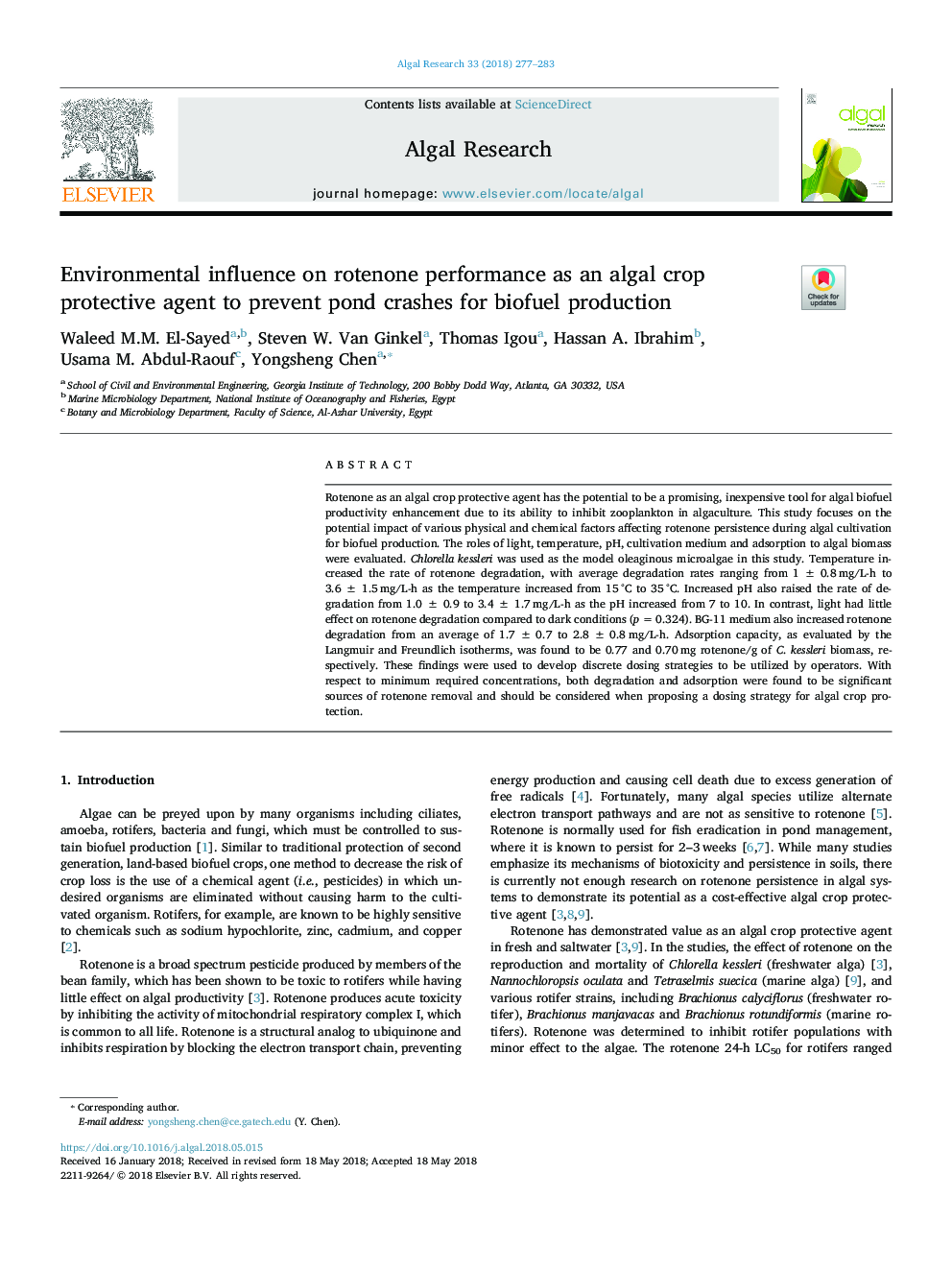| Article ID | Journal | Published Year | Pages | File Type |
|---|---|---|---|---|
| 8085713 | Algal Research | 2018 | 7 Pages |
Abstract
Rotenone as an algal crop protective agent has the potential to be a promising, inexpensive tool for algal biofuel productivity enhancement due to its ability to inhibit zooplankton in algaculture. This study focuses on the potential impact of various physical and chemical factors affecting rotenone persistence during algal cultivation for biofuel production. The roles of light, temperature, pH, cultivation medium and adsorption to algal biomass were evaluated. Chlorella kessleri was used as the model oleaginous microalgae in this study. Temperature increased the rate of rotenone degradation, with average degradation rates ranging from 1â¯Â±â¯0.8â¯mg/L-h to 3.6â¯Â±â¯1.5â¯mg/L-h as the temperature increased from 15â¯Â°C to 35â¯Â°C. Increased pH also raised the rate of degradation from 1.0â¯Â±â¯0.9 to 3.4â¯Â±â¯1.7â¯mg/L-h as the pH increased from 7 to 10. In contrast, light had little effect on rotenone degradation compared to dark conditions (pâ¯=â¯0.324). BG-11 medium also increased rotenone degradation from an average of 1.7â¯Â±â¯0.7 to 2.8â¯Â±â¯0.8â¯mg/L-h. Adsorption capacity, as evaluated by the Langmuir and Freundlich isotherms, was found to be 0.77 and 0.70â¯mg rotenone/g of C. kessleri biomass, respectively. These findings were used to develop discrete dosing strategies to be utilized by operators. With respect to minimum required concentrations, both degradation and adsorption were found to be significant sources of rotenone removal and should be considered when proposing a dosing strategy for algal crop protection.
Related Topics
Physical Sciences and Engineering
Energy
Renewable Energy, Sustainability and the Environment
Authors
Waleed M.M. El-Sayed, Steven W. Van Ginkel, Thomas Igou, Hassan A. Ibrahim, Usama M. Abdul-Raouf, Yongsheng Chen,
